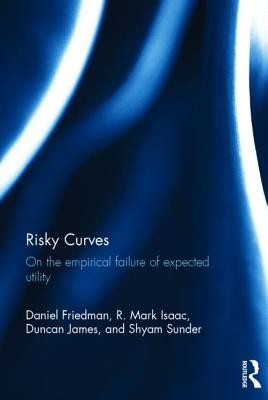
- We will send in 10–14 business days.
- Author: Daniel Friedman
- Publisher: Routledge
- ISBN-10: 0415636108
- ISBN-13: 9780415636100
- Format: 15.8 x 23.6 x 1.5 cm, kieti viršeliai
- Language: English
- SAVE -10% with code: EXTRA
Reviews
Description
For several decades, the orthodox economics approach to understanding choice under risk has been to assume that each individual person maximizes some sort of personal utility function defined over purchasing power. This new volume contests that even the best wisdom from the orthodox theory has not yet been able to do better than supposedly naïve models that use rules of thumb, or that focus on the consumption possibilities and economic constraints facing the individual.
The authors assert this by first revisiting the origins of orthodox theory. They then recount decades of failed attempts to obtain meaningful empirical validation or calibration of the theory. Estimated shapes and parameters of the curves have varied erratically from domain to domain (e.g., individual choice versus aggregate behavior), from context to context, from one elicitation mechanism to another, and even from the same individual at different time periods, sometimes just minutes apart.
This book proposes the return to a simpler sort of scientific theory of risky choice, one that focuses not upon unobservable curves but rather upon the potentially observable opportunities and constraints facing decision makers. It argues that such an opportunities-based model offers superior possibilities for scientific advancement. At the very least, linear utility - in the presence of constraints - is a useful bar for the curved alternatives to clear.
EXTRA 10 % discount with code: EXTRA
The promotion ends in 22d.00:57:25
The discount code is valid when purchasing from 10 €. Discounts do not stack.
- Author: Daniel Friedman
- Publisher: Routledge
- ISBN-10: 0415636108
- ISBN-13: 9780415636100
- Format: 15.8 x 23.6 x 1.5 cm, kieti viršeliai
- Language: English English
For several decades, the orthodox economics approach to understanding choice under risk has been to assume that each individual person maximizes some sort of personal utility function defined over purchasing power. This new volume contests that even the best wisdom from the orthodox theory has not yet been able to do better than supposedly naïve models that use rules of thumb, or that focus on the consumption possibilities and economic constraints facing the individual.
The authors assert this by first revisiting the origins of orthodox theory. They then recount decades of failed attempts to obtain meaningful empirical validation or calibration of the theory. Estimated shapes and parameters of the curves have varied erratically from domain to domain (e.g., individual choice versus aggregate behavior), from context to context, from one elicitation mechanism to another, and even from the same individual at different time periods, sometimes just minutes apart.
This book proposes the return to a simpler sort of scientific theory of risky choice, one that focuses not upon unobservable curves but rather upon the potentially observable opportunities and constraints facing decision makers. It argues that such an opportunities-based model offers superior possibilities for scientific advancement. At the very least, linear utility - in the presence of constraints - is a useful bar for the curved alternatives to clear.


Reviews